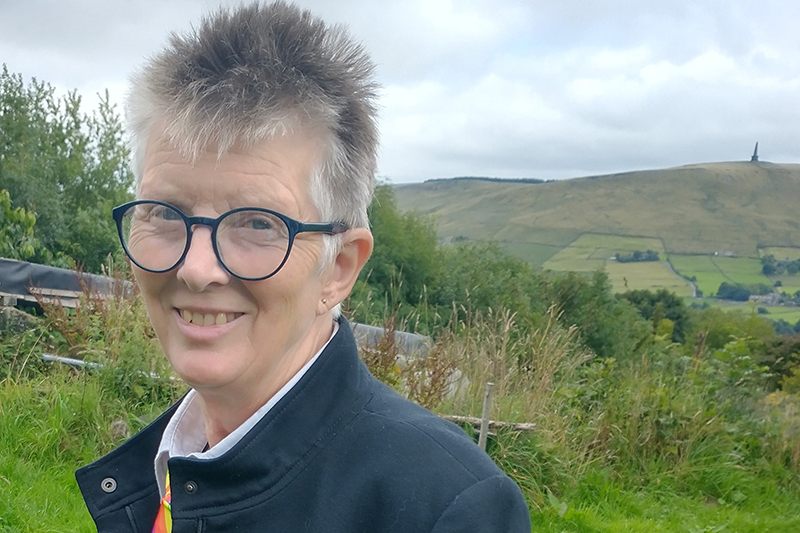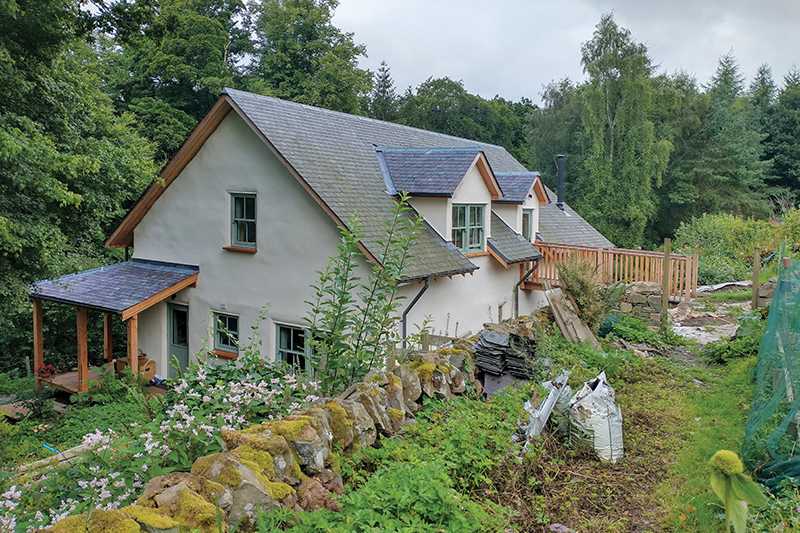Barbara Jones is a passionate advocate of building with natural materials and has been a leading exponent of straw-bale construction since the mid-1990s – designing affordable, straw-bale houses. She has designed, built, or trained people to work on more than 300 projects using the material. She co-founded The School of Natural Building and trains a community of aspiring natural builders through theoretical and practical courses.
 Jones and her team advocate the benefits of using straw, alongside natural plasters, for health and well being. These benefits include humidity regulation, prevention of bacterial growth and molds, no toxic off-gassing, passive and active ventilation with breathable wall systems, and thermal storage for temperature control.
Jones and her team advocate the benefits of using straw, alongside natural plasters, for health and well being. These benefits include humidity regulation, prevention of bacterial growth and molds, no toxic off-gassing, passive and active ventilation with breathable wall systems, and thermal storage for temperature control.
After she took a Women’s Workshop, taught by established female carpenters, she claims, “That was the tuning point for me…It was a revelation, an absolute game-changer. It made all the difference in the world.” She discovered she was actually good at carpentry, which is why she believes women-only courses are ‘absolutely essential’ to help women work in construction.
She was initially self-employed for a spell before working with a mixed building collective, which employed about six people with very different skills, including one or two women. Jones says that “It felt very positive and that things were changing for the better.” Many men in the building collectives were sharing their skills with women to help them work in construction.
Eventually she set up the first all-female building collective in the UK, called Hilda’s Builders. At their first job, renovating the ground floor of a big Victorian house into a self-contained flat, Jones keenly felt the inherent contradiction at play – she couldn’t imagine earning enough for a mortgage to buy her own place. She realized she was only going to secure a roof over her head by building or renovating a home herself.
Jones purchased two derelict houses with her partner in West Yorkshire, near to where she grew up. She was able to work on the houses full-time for four years, having completed her second year of the City & Guilds course at Hackney College alongside her day job. Her partner was also a carpenter, joiner and builder, and had previously renovated a house.
With the shoots of a green movement in the mid-1990s, Jones wanted to learn more about sustainable building methods. Traveling for a year, she found jobs through a women’s network in the US, Canada, Australia and New Zealand, working for accommodation and food instead of cash.
Her partner’s sister was a California-based artist who was building a straw-bale studio. Eight women took only two days to build the whole studio. “Honestly, it changed my life completely doing that. I just thought, ‘wow, I cannot believe how simple and effective this is’, and from that moment, I knew this was my path. This is what I had to do.” She says.

Hooked on the simplicity, affordability and functionality, Jones learned everything she could about straw-bale buildings. “I’ve always thought everyone should have access to good-quality housing, not just rich people. And so affordable housing for all has always been the thing I’m trying to achieve one way or the other.”
Jones quickly learned that keeping a client offsite is impossible when working with straw, because they are so keen to be hands-on. So, her team adapted to work alongside them, teaching them techniques quickly and supervising the quality.
“In a straw building, the roof’s weight compresses the material, which is how load-bearing buildings used to be built,” Jones says. “The straw-bale compression varies depending on the density, but ‘construction-grade bales’ should depress less than 10mm. The best house design is simple, such as a square or rectangle, so the roof weight can be spread evenly through the walls.”

After Jones started designing with a Czech architect, they set up the company Straw Works in 2011 to focus on architectural design, while still providing training and construction services. Straw Works designed and helped build the first Living Building Challenge structure. These are designed to be regenerative buildings that connect occupants to light, air, food, nature and community. They are meant to be self-sufficient and remain within the resource limits of their site. There are no VOCs and no toxins with straw, timber, clay and lime, and our human biological bodies are in harmony with these materials,
Jones is now a Technical Consultant on a straw panel project. She describes the EcoCocon panels developed as a game-changer, with the walls of a three-bedroom, two-story house being erected in three or four days, while remaining affordable. While the panels are thinner, the clay plaster and external wood-fiber board – with a lime or timber cladding –result in a similar thickness.
Straw bales can be more fire resistant than most modern materials, Jones asserts. While straw can be a real fire-risk in a certain form, dense straw has only enough air to be good insulation, not enough to combust, she explains. It acts similarly to large-dimension timber, charring outside protecting the inside.
You can read the original article at www.iom3.org

As always, a great article.